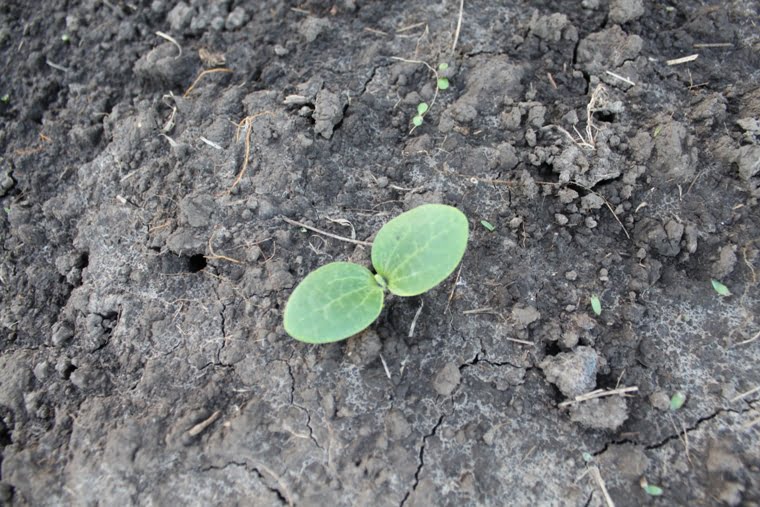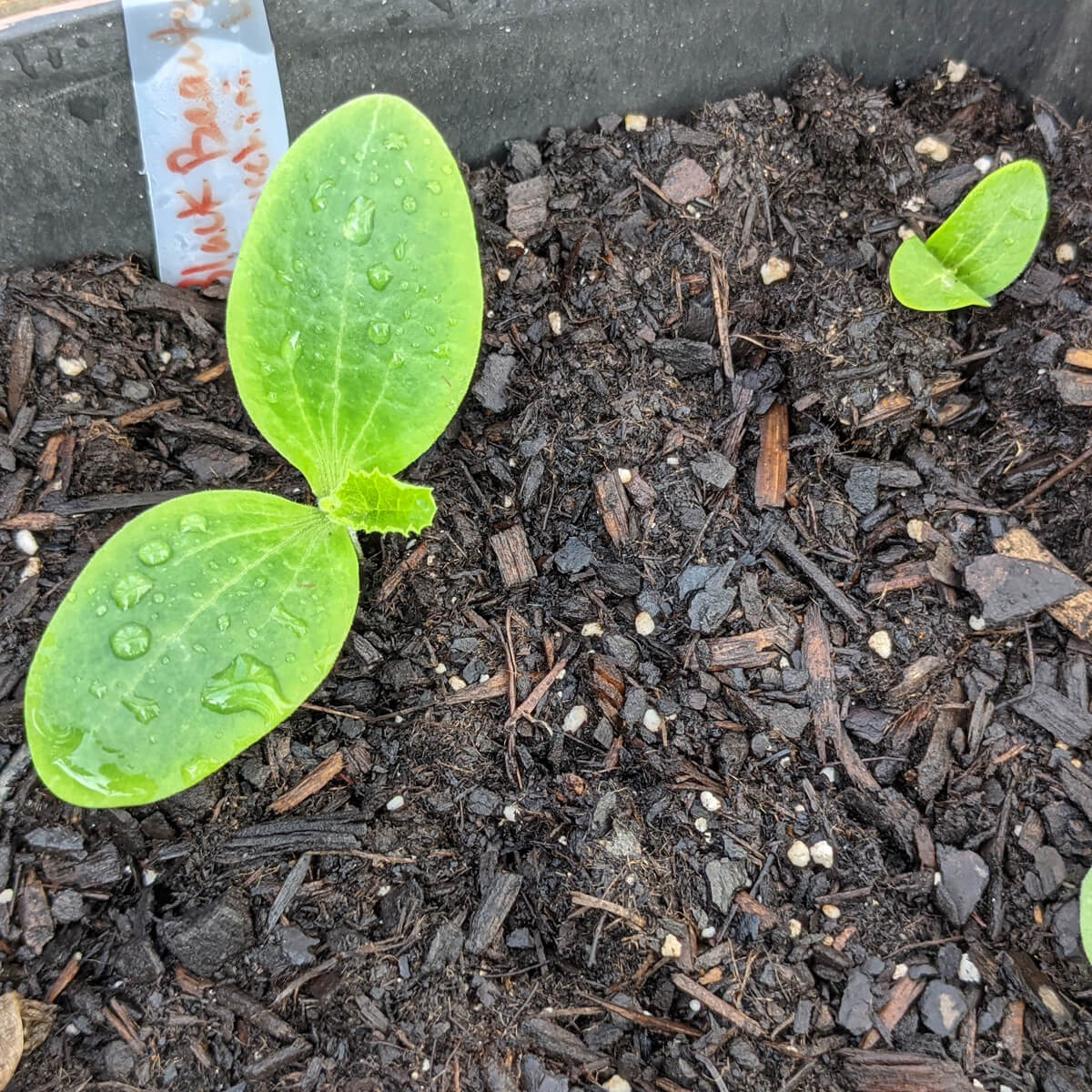Have you ever wondered what zucchini sprouts look like? If so, you’re in luck! In this article, we will unravel the mystery and give you a visual glimpse of these adorable little plants. Zucchini sprouts are characterized by their vibrant green color, slender stems, and delicate leaves. They emerge from the soil as small, seedling plants, with their distinctive leaves unfurling in a graceful manner. Whether you’re a passionate gardener or simply curious about these nutritious veggies, join us as we explore the enchanting world of zucchini sprouts!

Appearance of Zucchini Sprouts
Size and shape
When zucchini sprouts first emerge from the soil, they are typically small and delicate. Their size can vary, but they are usually a few inches tall and have a slender, elongated shape. As they continue to grow, their size will increase, and they will become more robust.
Color
Zucchini sprouts initially have a vibrant green color, which is a characteristic feature of most plant sprouts. This green color indicates the healthy growth and vitality of the sprouts. As they mature, the color may deepen, becoming darker green. It’s quite fascinating to see how the sprouts develop and transform in color as they progress.
Texture
The texture of zucchini sprouts is smooth and tender to the touch. When you run your fingers over their leaves, you’ll feel the softness and delicacy of their young foliage. This delicate texture is significant in promoting photosynthesis and nutrient absorption in the early stages of growth. The texture tends to get slightly rougher as the sprouts mature, but they still maintain a certain level of softness.
Germination Process
Seed planting
To start the germination of zucchini seeds, it’s crucial to plant them correctly. Begin by selecting healthy zucchini seeds that are suitable for the climate and growing conditions in your region. Prepare your seed trays or pots by filling them with well-draining soil, and then sow the seeds about an inch deep. Make sure to provide enough space between each seed to allow adequate airflow for proper germination.
Soil conditions
Zucchini sprouts thrive best in loose, well-drained soil. The soil should ideally be rich in organic matter and have a neutral pH level. It’s important to ensure that the soil is adequately moist but not waterlogged. Overly damp soil can lead to root rot and hinder the germination process. Regularly check the moisture level and adjust watering accordingly to maintain ideal conditions for the sprouts.
Germination time
Once the zucchini seeds are planted and provided with the appropriate growing conditions, the germination process will begin. Zucchini sprouts typically emerge from the soil within 7 to 14 days after planting. However, it’s important to note that germination time may vary depending on various factors such as temperature, moisture, and seed quality. During this time, it’s crucial to keep the soil consistently moist to support the sprouts’ healthy development.

Development Stages
Cotyledons
After the zucchini sprouts break through the soil surface, they reveal their cotyledons, which are the first leaves to appear. Cotyledons are usually small, oval-shaped, and often have a slightly lighter shade of green compared to the true leaves that will follow. They play a crucial role in supplying the sprouts with energy until the true leaves take over the photosynthesis process.
True leaves
As the zucchini sprouts continue to grow, they will develop their true leaves. These leaves resemble the mature leaves of a zucchini plant, featuring a more distinct shape with a jagged edge. True leaves are responsible for conducting photosynthesis, converting light energy into chemical energy for the plant’s growth and development.
Stem growth
Simultaneously, while the leaves are developing, the stem of the zucchini sprouts will also experience rapid growth. You’ll observe the stem elongating, providing structural support for the sprouts and allowing them to reach towards the sunlight. This growth is a positive sign of healthy progression and an indication that the sprouts are on their way to becoming robust zucchini plants.

Comparison with Other Vegetable Sprouts
Tomato sprouts
When comparing zucchini sprouts to tomato sprouts, there are some noticeable differences. Zucchini sprouts generally have slender, elongated shapes, while tomato sprouts tend to have a more rounded and compact appearance. Additionally, tomato sprouts often have a lighter shade of green and exhibit a slightly different leaf structure compared to zucchini sprouts. These variations in appearance reflect the unique characteristics of each vegetable’s growth pattern.
Cucumber sprouts
Compared to cucumber sprouts, zucchini sprouts can differ in several aspects. While zucchini sprouts have a more elongated shape, cucumber sprouts typically have a rounded shape, similar to tomato sprouts. Furthermore, cucumber sprouts usually display a lighter green color initially, which gradually deepens as they grow. The texture of cucumber sprouts may also feel slightly different from zucchini sprouts, as cucumber sprouts tend to have a smoother surface.
Squash sprouts
Zucchini and squash are closely related, belonging to the same genus, Cucurbita. As a result, their sprouts bear some similarities in appearance. Both zucchini and squash sprouts have elongated shapes and vibrant green colors. However, you may notice that squash sprouts tend to be more rounded at the tip, setting them apart slightly from zucchini sprouts. It’s fascinating to observe these subtle distinctions as the sprouts of various vegetables emerge and develop.

Common Issues and Troubleshooting
Damping-off disease
One common issue that zucchini sprouts may encounter is damping-off disease, caused by fungal pathogens in the soil. To prevent this, it’s crucial to ensure proper soil drainage by using well-draining soil and avoiding overwatering. Additionally, providing good air circulation and maintaining a clean growing environment can help mitigate the risk of damping-off disease.
Poor growth
If your zucchini sprouts are exhibiting poor growth, it could be due to several factors. Inadequate sunlight, nutrient deficiencies, improper watering, or unfavorable temperatures can all contribute to stunted growth. Ensure that your sprouts are receiving sufficient sunlight, water them consistently and appropriately, and consider using organic fertilizers to provide them with the necessary nutrients for robust growth.
Pest infestation
Zucchini sprouts are susceptible to pest infestations, with common culprits including aphids, cucumber beetles, and squash bugs. Regularly inspect your sprouts for signs of pests, such as visible insects, wilting leaves, or yellowing. If you detect a pest problem, consider implementing organic pest control methods such as introducing beneficial insects or using natural pest deterrents like neem oil or soapy water sprays.
By understanding the appearance of zucchini sprouts, the germination process, the development stages, and how they compare to other vegetable sprouts, you can better appreciate the growth journey of these versatile plants. Additionally, being aware of common issues and troubleshooting techniques will help ensure the healthy development of your zucchini sprouts, setting the foundation for a bountiful harvest in the future. Happy growing!




